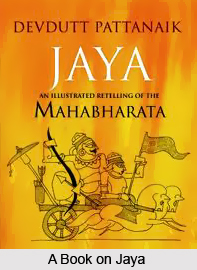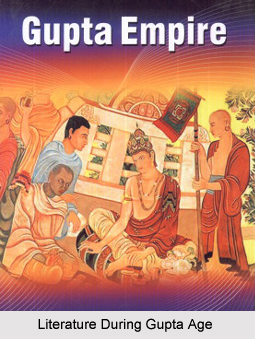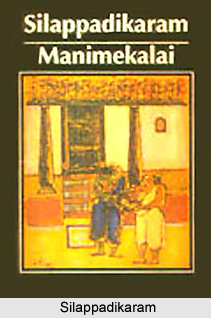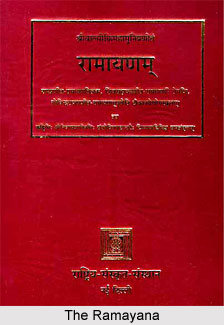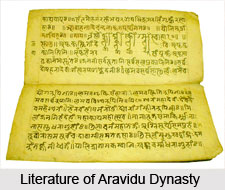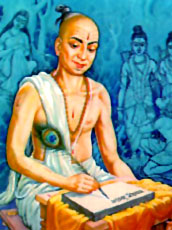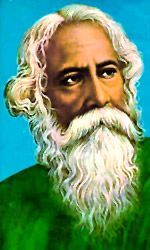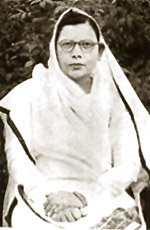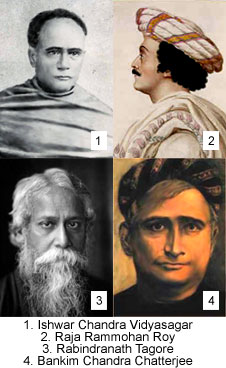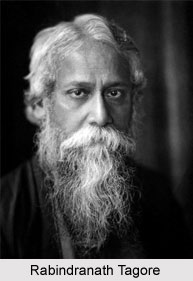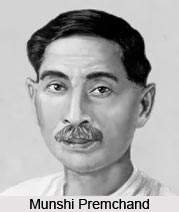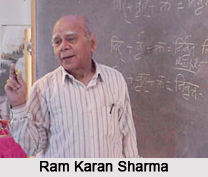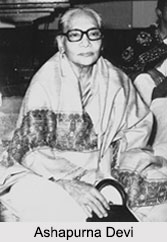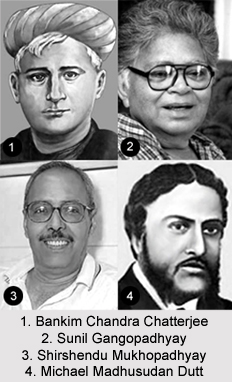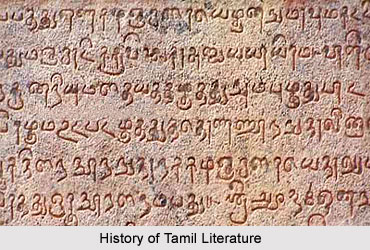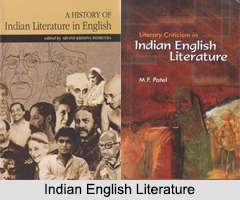Introduction
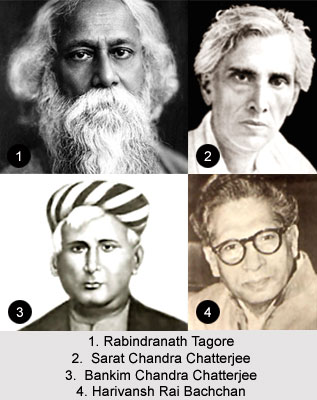 Renaissance in Indian literature includes several significant creative works of renowned authors. Indian literature as a whole experienced a new beginning with the Hindu Renaissance in the beginning of mid 19th century. Mostly centred on the Bengal province, eminent authors like Rabindranath Tagore, Sarat Chandra Chatterjee and Bankim Chandra Chatterjee contributed significantly in the renaissance in Indian literature by establishing a literary genre of the nation, no more the borrowed tongue. Renaissance is basically considered as an inspiration from the past and planning to rebuild the future. Thus, in this respect the renaissance in the life of "a nation is like the coming of a new age. It is adolescence turning, into adulthood: romanticism and revolution replaced by reason, narcissism followed by disillusionment" freed from the religious bigotries, blind faiths towards a new dawn of rationalism, positivism.
Renaissance in Indian literature includes several significant creative works of renowned authors. Indian literature as a whole experienced a new beginning with the Hindu Renaissance in the beginning of mid 19th century. Mostly centred on the Bengal province, eminent authors like Rabindranath Tagore, Sarat Chandra Chatterjee and Bankim Chandra Chatterjee contributed significantly in the renaissance in Indian literature by establishing a literary genre of the nation, no more the borrowed tongue. Renaissance is basically considered as an inspiration from the past and planning to rebuild the future. Thus, in this respect the renaissance in the life of "a nation is like the coming of a new age. It is adolescence turning, into adulthood: romanticism and revolution replaced by reason, narcissism followed by disillusionment" freed from the religious bigotries, blind faiths towards a new dawn of rationalism, positivism.
Over the past few decades, the socio-political landscape of the country has changed drastically and there has been an atmosphere of spring clearance. The rural scene of the country also experienced changes with abundant harvests, more production, bonded labour and untouchability being, branded as heinous crimes, family planning reaching every needy door, dowry being banished and emergence of strong, concerned youth power. All this and more has its repercussions on Indian writing also. More writers are budding from the classes of peasants and workers especially the from the backward Dalit class. With the passage of time, more commercially motivated persons invaded the fields of publication and film making and journalism and with the printing press having its strong foot hold amidst rationalized Indians, literature indeed saw a breath taking rise. Renaissance in Indian literature introduced a different style of Indian writing in different regional languages which is regarded as worthwhile and meaningful, writings of young writers, new experiments and exploration of new forms and ideas. Indian literary works started to depict the life of the poor and the depressed. In Bengali literature, the prose-poem gained popularity, the blank verse. Further, some poets have travelled the road of propagandists using the broadcast media for poetic plays and other documentaries on current relevant topics.
The `Renaissance` signifying `rebirth` originated in Italy roughly between 14th and 17th century, was primarily a cultural uprising. But in India, renaissance originates as a social reform movement, probably in the nineteenth century, when the British were the domineering body of the Indian politics. Renaissance in India, materialised as a concept imitated from the West, punctuate a social reshuffling. Indian renaissance appears as a reawakening of the latent society, quivering with the threats of orthodoxy, dowry and narrow caste system. Moreover foreign colonialism at that time was an intense blight over India. Several social uprising and organisations were developed to liberate the society from the shackles of superstition. Quite visibly, literature composed during this period is the clear specimen of the socio-political ethos of the era.
Bengali Literature: Bengali Literature enthused with immense revolutionary zeal was instrumental for the reconstruction of the quiescent society of the time. It was the Bengali literature, which installed the very basis of literary and social development all over the country.
Hindi Literature: Hindi Literature of the time was the authentic replica of the splendid antique traditions with a touch of lenient and rhythmic prose.
South Indian Literature: Steeped in Renaissance tradition, South Indian Literature mainly underscores the human behaviour and situation.
Urdu Literature: Urdu Literature was however shifted from stimulating any social reforms rather it showed propensity for the cultural revitalisation.
In India, during the last few decades a new phase has been witnessed prominently and markedly sweeping through all literary output as an impact of the renaissance. It is the change in the language of the writer. Morality is rapidly changing, with growing urbanisation and industrialisation. Hence, as a result of the renaissance in Indian literature this sudden explosion of the writers mainly concern about the future of their nation. What started as translation literature, culminated into writing in colonial tongue. Moreover, scientific mindedness is in the air and science fiction has become an absorbing new field. However, Indo-Anglican writing has not responded fully to the changing reality as readily as has been seen in Indian languages. Rather than a temporary phase of reformation, renaissance symbolically pinpoints at the enlightenment of the mind, and that indeed is a constant factor, an ongoing process.
Renaissance in South Indian Literature
The influence of Renaissance in South Indian literatures is quite evident from the literary works. The concept of renaissance entered the Indian ethos from France. The French word `Renaissance` means rebirth, synonymous to Latin Renascor and Italian Rinascimento. Many translations have been provided of this word in different Indian languages: Nava Jagaran (Bengali), Prabodhan (Marathi), Nash`at (Urdu). Renaissance Art from the European view point meant the cultural awakening and glorification and the nostalgia remembrance of the pre-industrialization era.
Development of Concept of Renaissance in South Indian Literature
As the British power rose in dominance in India three kinds of Britishers: conquerors and colonizers, Christian missionaries and civilizers, who were the champions of culture. They were again classified into `Orientals` and `Anglicists`. In South India certain material events boosted this western impact. Like in Madras (presently Chennai) the University was constructed in 1857, the first telephone exchange in. 1881, the first manganese mine in 1892. Before the western impact the towns were either seats of pilgrimage and political power like Chidambaram, Tanjore and Madras. They were relocated to new ports like Madras. The same process was observed in other regions as well. Literature was also not devoid of this impact. The great contributions of Subramanya Bharati or V. Swaminatha Iyer, Kumaran Asan or Vallathol, Vireshalingam or Suravararn Pratap Reddy, Srikantaiah or Parye Mangesh Rao (Kailasam) are all the achievements of last hundred years.
Impact of Renaissance in South Indian Literature
The South Indian literatures are characterised by a rich literary tradition and heritage. Each literature has had its own share of ups and downs, the glorious periods alternating with sterile. The British conquest resulted in confusion, demoralization and sterility which affected the entire literature of India including the four literatures of South India .However the last century was characterised by literary renaissance all over the country which resulted in the prominence of stalwarts in South Indian literatures. The birth anniversaries of these stalwarts who marked the renaissance in South Indian literatures have always been celebrated with great dignity and respect or will be celebrated soon. The renaissance revived not only the greatness of the past but also incorporated the new relevant elements appropriate for the present age. New forms like the novel, social play, satire, the light essay, etc., was handled with heightened self-assurance due to the influence of western literature and thought.
The Renaissance movement was not only characterised by a mere awakening but a historical epoch culminating the advent of modern world. In India, the impact of it was mainly felt in the arts, particularly with Indian Literature. New discoveries and voyages, the birth of printing and new military weapons, rise of the new city-states, foundation of secular humanism and a heightened interest in vernacular language are some significant developments that characterised this movement.
Renaissance in other Regional Literature
Calcutta`s literary & liberal life as introduced by the Renaissance, initiated a tremendous boost in the neighboring regions. Lakshmikant Bezbarua, the rational liberalist was a true child of the romantic idealism of the West & dominated the literary arena of Assam for about half a century. Orunodoi, first newspaper in Assam attempted the promotion of Assamese literature imbued with nationalistic enthusiasm. The later half of the 19th century experienced overflowing literary upsurge. Hem Chandra Barua`s "Hem Kosha" and journals like "Assam Bandhu" & "Arunodoy Samvad Patra" launched an immaculate style of articulate prose. Phukan & Gunabhiram Barua were the chief literary personalities of the age. When, in the Renaissance tradition, novels & drama became instrumental for the social & cultural reforms all over India, in Assam it was short stories & folk poetry, which dominated the literary sphere of Assam. Hiteshwar Barua, Chandra kumar Agarwala, Padmanath Gohain Barua etc prompted social reforms through their compositions.
Malayalam Literature permeated with the liberal- democratic spirit immediately with its encounter with the west & spread of modern education. Radical doctrine about the changing politics & the national movements were also exerting influence over the writers of the period. The period was marked by the growth of prose fiction, drama & literary criticism and the spread of journalism. Varma Valiakoi Thampuran, A.R. Raja. Varma , C.v Raman Pillai etc were the notable writers of the Malayalam Literature. "Kurupillakari", "Dharmaraja" etc were the remarkable works of the period engraving the social portrait of the time.
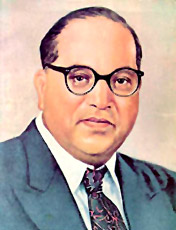 Renaissance in Maharashtra was marked by the reason & development of prose literature. It was a period of great intellectual stimulation and the sheer insistence on English education. Renaissance in Maharashtra aimed for social reforms. Marathi Drama was the immediate product of the Renaissance and established a new genre called " Sangit Natya" or "Musicals."
Renaissance in Maharashtra was marked by the reason & development of prose literature. It was a period of great intellectual stimulation and the sheer insistence on English education. Renaissance in Maharashtra aimed for social reforms. Marathi Drama was the immediate product of the Renaissance and established a new genre called " Sangit Natya" or "Musicals."
In the dramas like "Sita Swyamvar" and "Kirioskar" social content is fused with romantic aroma. Krishnaji Prabhakar`s play "Kichaka Vadh" initiated the tradition of political play in Maharashtra, which led an overflowing blow against the British Raj all over Maharashtra & the government barred it. The publication of little magazine gained impetus with the rapid change of the political vista. Tilak`s journal "Kesari" was a pedestal for sharing literary yet political views. Babasaheb Ambedkar, with his radical philosophy, challenged the conventional literary foundation comprised mainly of the urbanized upper class people.
